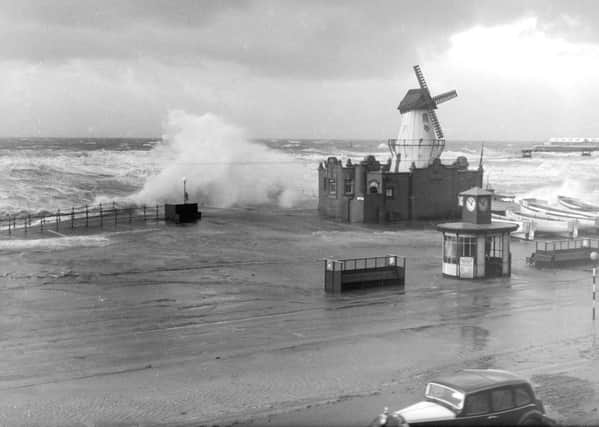The ferocious power of nature


In 1927, areas of the town were flooded to a depth of seven feet. Six lives were lost.
The Fylde coast, and Lancashire overall, has been hit by some of the worst storms to affect Britain over the years.
Advertisement
Hide AdAdvertisement
Hide AdOn August 10, 1893, a fierce thunderstorm hit Preston. In five minutes, about an inch and a quarter of rain fell – still a record for Britain. Cellars were under water, and it must have been a bizarre sight when, in the midst of water, water everywhere, a wholesale grocer’s was set on fire when it was struck by lightning.
Lancashire holds other British records for downpours. The most rain to fall in 15 minutes was 2.2ins at Bolton Hall in July 1964, while the record for 90 minutes goes to Dunsop Valley – 4.6ins in August 1967.
These records were set in the summer, and another notable summer storm came on July 29, 1588. This one did a fine job for England by destroying much of the Spanish Armada, but also demolished the village of Singleton Thorpe, which stood off what is now Blackpool’s north shore – including its celebrated inn, the Penny O’Pint. A number of villagers were drowned and the storm washed away so much of the coast the settlement could not be rebuilt. It was said an ancient prophesy had foretold the fate of Singleton Thorpe would be linked with the doom of a foreign power.
A galleon from the Armada was beached by the storm near Rossall Grange. Local men tried to board her, but were driven back by cannon and musket fire, and as the tide rose, the ship managed to escape.
Advertisement
Hide AdAdvertisement
Hide AdAnother storm in January 1839 brought a windfall for some Lancashire folk, when the Crusader bound to Bombay from Liverpool sank, shedding tempting silk and cotton goods along the Fylde coast, to which the inhabitants of Marton helped themselves.
The ship’s crew survived, but another cargo vessel carrying tobacco was less fortunate, going down with all hands off Rossall, and 15 fishing boats were sunk at Lytham.
Nowadays we get warnings the climate is getting more volatile, with the United Nations’ Intergovernmental Panel on Climate Change, which consults thousands of scientists across the world, saying storms will become fiercer and downpours heaviet. The last few years have certainly brought some formidable ones.
Winter 2013-4 saw some of the worst storms in living memory hit the Sefton coast. Then on December 5 last year, Storm Desmond brought havoc to the Lancaster area.
Advertisement
Hide AdAdvertisement
Hide AdAbout 61,000 homes lost electricity when a substation was flooded, along with the bus station and a supermarket, while Lancaster University and the Lancashire Campus of the University of Cumbria were forced to evacuate students. Barely had Desmond subsided, than along came Eva which on Boxing Day brought the worst flooding recorded in West Lancashire, with nearly 300 properties inundated. Many people have still not been able to return. St Michael’s in Wyre was badly hit by storms.
Growing up in Manchester, one of my most vivid weather memories was winter 1962-63. I played lacrosse at school, and our last pre-Christmas match in mid-December had to be cut short because of heavy rain. Then came the big freeze, and we did not play again until mid-March.
Some forecasters are saying we may get a taste of something similar this winter, but as Sam Goldwyn warned, you need to beware of making predictions.
• Storm: Nature and Culture by John Withington is published by Reaktion Books, £14.95. ISBN 9781780236612.
See Friday’s paper for more Memory Lane.